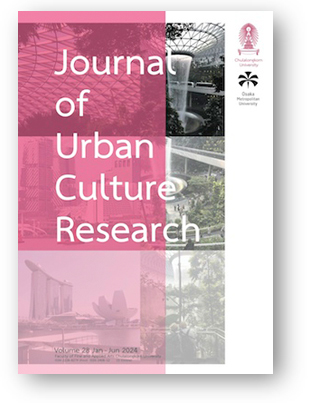Cultural Sustainability, Uniqueness and the Power of Productive Living Heritage in Cirebon, Indonesia
DOI:
https://doi.org/10.14456/jucr.2023.32Keywords:
Living Heritage; Place Authenticity; City Heritage; SDG11; IndonesiaAbstract
Sustainability is intricately linked to culture, people and place. When exploring heritage cities, visitors encounter a range of possibilities, from preserving historical sites to embracing living heritage and transitioning into modern heritage cities. The value of a historic city extends beyond its history and authenticity; it relies on its ability to fulfill specific functions and cater to visitors' desires. This study focuses on the authenticity of Cirebon, Indonesia, particularly its old historic center comprising four palaces and the Trusmi cultural village. Cirebon, strategically located in West Java, serves as a vital link between Jakarta and Surabaya. In 2022, its population reached 346,348 residents, with a density of 9,194 individuals per square kilometer. Using qualitative methods, the research uncovers two intertwining narratives that shape the city's unique and sustainable identity. It emphasizes that preserving Cirebon's distinctive sense of place, through nurturing cultural assets, is essential for a vibrant living heritage, ultimately enhancing the city's competitiveness in the contemporary era.
Downloads
Published
Versions
- 2024-12-06 (4)
- 2024-10-06 (3)
- 2024-07-07 (2)
- 2024-06-24 (1)
How to Cite
Issue
Section
License

This work is licensed under a Creative Commons Attribution-NonCommercial-NoDerivatives 4.0 International License.
Authors authorize the JUCR to publish their materials both in print and online while retaining their full individual copyright. The copyright of JUCR volumes is retained by Chulalongkorn University.
The views and opinions expressed herein are those of the individual author(s) and do not necessarily reflect the policies or opinions of the Journal (JUCR), it editors and staff, Chulalongkorn University, or Osaka Metropolitan University.







